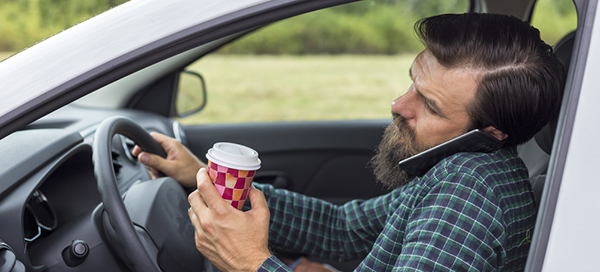Distracted Driving by Generation Statistics
If you drive anywhere, then there is an excellent chance you’ve been distracted behind the wheel. We multitask in this environment so often that some distractions don’t seem problematic. Using GPS, changing the radio station, or getting something to drink all increase the risk of a collision.

Texting and driving receive the most attention because it creates cognitive, physical, and visual distractions for the driver. Over 3,000 fatalities occur every year in the United States because of distracted driving issues.
Let’s take a look at statistically how different generations approach distracted driving.
Generation X vs. Generation Z Behind the Wheel
Generation Z drivers, who are generally 24 years old or younger, are the least likely to use their smartphone while driving. The Harris Poll conducted a survey about distracted driving habits for multiple age demographics and discovered the following information.
- 71% of Generation Z drivers admitted to using their phones while driving.
- 72% of young Baby Boomers said that they did too.
- 81% of Millennials admitted to using their mobile device.
- And 81% of Generation X drivers are on their phones.
Talking on the phone is the most common distraction for all drivers in every generation, but there are a variety of behaviors that occur based on age after this point of common ground.
Driving Habits of Older Baby Boomers
The Harris Poll had some interesting information about older drivers to consider too. Older Boomers do not lead in any distracted driving category when comparing their results to other generations – that doesn’t mean they are putting their phone down when behind the wheel though.
Over 60% of older drivers admit to talking on the phone while driving. 30% say that they check their social media behind the wheel – which is only a couple of percentage points behind Generation Z. About 20% of drivers in this generation admit to reading texts behind the wheel as well.
Conclusion
Instead of trying to blame other groups of people for what happens while behind the wheel, we must shift the focus toward what we can control. Distracted driving occurs when we decide to take our eyes off of the road.
Parents need to lead by example whenever possible. Teens have a lot to lose if they get pulled over for distracted driving because it could mean a suspended or delayed license for them. Seniors can also lead by example by putting the distractions away whenever possible.
Every distraction increases the risk of a collision. If you take your eyes off of the road for just five seconds while driving 55 mph, then you’ve gone the length of a football field without seeing what is in front of your vehicle.
There’s enough blame to go around. Let’s work together to limit the distractions when we’re behind the wheel to set a positive example for the next generation.
